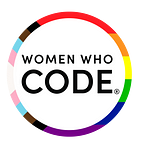Career Nav #61: Designing Video Games for Motor Rehabilitation
Written by WWCode Team September 4, 2023
Aurora Ruiz Rodríguez, PhD Candidate at the University of Twente, shares her talk, “Designing Video Games for Motor Rehabilitation.” She discusses the differences between a normal extra game, a commercial extra game, and a therapeutic extra game. She also talks about the details that must be considered when creating therapeutic games and how customization to the individual ensures that games are tailored to specific needs.
Video games are systems developed for entertainment purposes. The idea is that we keep the gamers motivated to use them. There are different types of video games. There are types of games whose principal purpose is not to entertain. They offer a new mechanism for teaching or training, combining video games and education. In therapy, we can have all these training or the healthcare area involved. The modality of these video games is the physical type of video games. When we talk about physical video games, we talk about extra games and extra game systems. They are a combination of exercise and gaming. Every game involving any physical movement extension is called an extra game. This involves strength, balance, flexibility, or any activity that makes you not sedentary.
There are commercial extra games that we can find on the market. Maybe you already know something like the Wii Fit, Dance from the Connect, or any other video game that makes you want to move. These commercial extra games are for entertainment or fitness for everyone to work out. They don’t address the requirements of our rehabilitation therapy. In extra games and rehabilitation, we need to find exactly and develop what aims to promote this motor rehabilitation and how to improve the physical and mental state of the patients during this therapeutic process. These video games become a very important part of Occupational therapy. They increase motivation in rehabilitation practice. For best results in rehabilitation, video games are a very important part because when they are designed for therapy and patients want to use them.
These video games need to be designed specifically for the patient. We have these tailored extra games that the personalization or computer tailoring refers to how to adapt this persuasive technology to the individual. This type of extra game can guarantee that the individual can use the system because it is made specifically for the patient. Each population, children with autism, elderly people with a stroke, or any patient with a motor issue we need to work with needs a different type of tailoring regarding motor skills. There are two types of moderate skills: the fine motor skills regarding the hand movement and the gross motor skills regarding the body movement.
When we are going to design a system, we need to focus first on the user. We use a user-centered design. First, we must understand the context of use. We need to see who the user is and where they will use the system. Do we want them to train at home or in a clinic? Then, specify all the user requirements. With children with autism, we cannot have overwhelming stimuli, like very loud noises, colors, or sounds. We have to address cognitive differences. Then, we start designing some solutions regarding the requirements. We evaluate all the ideas until we come up with the final design.
When we work with motor rehabilitation, we need to specify one very important requirement when designing the solution. What device are we going to use to track the movement? We can use pressure mats when walking or doing gross motor movements. We can have different camera-based sensors. The real sense camera can track the whole skeleton of a person. You can analyze how the movement is going. We also have devices to track the hand, like the leap motion or some touch sensors like picometers or other sensors that can track the hand movement or the cell phone. The cell phone is also being used in some extra games to identify how you are moving… Read the full story.
Originally published at https://www.womenwhocode.com.
